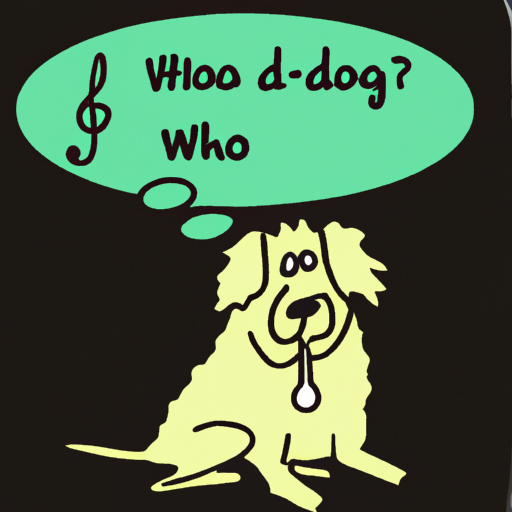As a dog owner, it’s essential to communicate effectively with your canine companion. One of the ways dogs convey their feelings and needs is through whining. This whining can be a sign of various emotions, including anxiety, excitement, or attention-seeking behavior. But, how do dogs whine? Let’s delve into this fascinating aspect of dog behavior to help you better understand and respond to your pet’s needs.
- Table of Contents
- Understanding Dog Whining
- Causes of Dog Whining
- Interpreting Your Dog’s Whining
- How to Respond to Your Dog’s Whining
- Frequently Asked Questions
- Key Takeaways
- Dogs whine as a form of communication.
- The causes of dog whining can be varied, including anxiety, pain, and attention-seeking.
- It’s crucial to interpret your dog’s whining correctly to respond appropriately.
- Never punish a dog for whining, as this can create more problems.
- Consult a professional if your dog’s whining becomes a serious concern.
Understanding Dog Whining
Whining is a natural behavior for dogs. Puppies whine to get attention from their mothers, and as dogs grow older, they continue to use this form of communication with their human families. It’s a vocal expression that dogs use to communicate their physical, mental, or emotional state. Dogs can’t tell us what they’re feeling, so they rely on a variety of sounds (like barking, growling, and whining) to get their message across.
Whining is a high-pitched sound, often prolonged, and can be loud or soft. Dogs can whine with their mouths closed or slightly open. The exact sound can vary depending on the dog’s breed, age, and individual characteristics.
You might find this video on dog vocalizations enlightening.
Causes of Dog Whining
There are many potential triggers for your dog’s whining. Here are some of the most common:
- Attention-Seeking: Dogs often whine when they want something, like food, a toy, or your attention.
- Anxiety: Dogs can whine when they’re anxious or stressed. This could be due to separation anxiety, fear, or unfamiliar situations.
- Excitement: Some dogs whine when they’re excited, especially if they know they’re about to go for a walk or get a treat.
- Pain or Discomfort: If your dog is whining more than usual and seems to be in distress, they might be in pain. It’s important to consult a vet if you suspect this is the case.
- Submissiveness: Dogs can whine when they’re trying to be submissive. This can happen when they’re interacting with other dogs or people.
You can learn more about the causes of dog behavior here.
Interpreting Your Dog’s Whining
To interpret your dog’s whining correctly, you need to pay attention to the context. For instance, a dog whining at the door probably wants to go outside. A dog whining while lying down might be uncomfortable or in pain. A dog whining when you come home might be expressing excitement.
Consider the situation and your dog’s body language to get a clearer picture of what they’re trying to communicate. For example, a whining dog that’s pacing, panting, and unable to settle might be stressed or anxious.
This article on understanding dog body language might be helpful.
How to Respond to Your Dog’s Whining
Your response to your dog’s whining should depend on the cause. Here are some general guidelines:
- If your dog is whining for attention, try to ignore them until they stop. Then, give them attention when they’re quiet. This helps teach them that whining doesn’t get them what they want.
- If your dog is whining due to anxiety, try to address the root cause of the anxiety. For example, if your dog has separation anxiety, gradual desensitization can help. Consult with a professional for guidance.
- If your dog is whining out of excitement, help them learn to calm down. For instance, if your dog whines when you get their leash, wait until they’re calm before you put it on and begin the walk.
- If you suspect your dog is whining due to pain, consult a vet immediately.
For more tips on dealing with dog whining, check out this helpful guide.
Frequently Asked Questions
1. Why does my dog whine so much?
Dogs whine for various reasons, including seeking attention, expressing anxiety, or indicating pain. If your dog whines excessively, it’s best to consult a professional to identify the root cause.
2. How can I stop my dog from whining?
Addressing the cause of the whining is the most effective solution. If your dog is whining for attention, try to ignore them until they stop. If anxiety is the cause, work on addressing this with a professional.
3. Is dog whining a sign of pain?
It can be. If your dog is whining more than usual and seems to be in distress, it’s important to consult a vet.
4. What does it mean when a dog whines at night?
This could be due to anxiety, the need to go to the bathroom, or discomfort. It’s important to identify the cause to address it appropriately.
In conclusion, understanding why and how dogs whine can greatly improve your relationship with your pet. Watch for signals, be patient, and remember -communication is key in any relationship, even with our furry friends!



